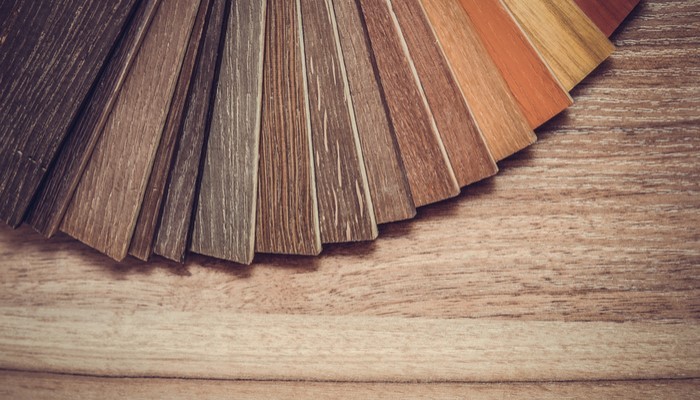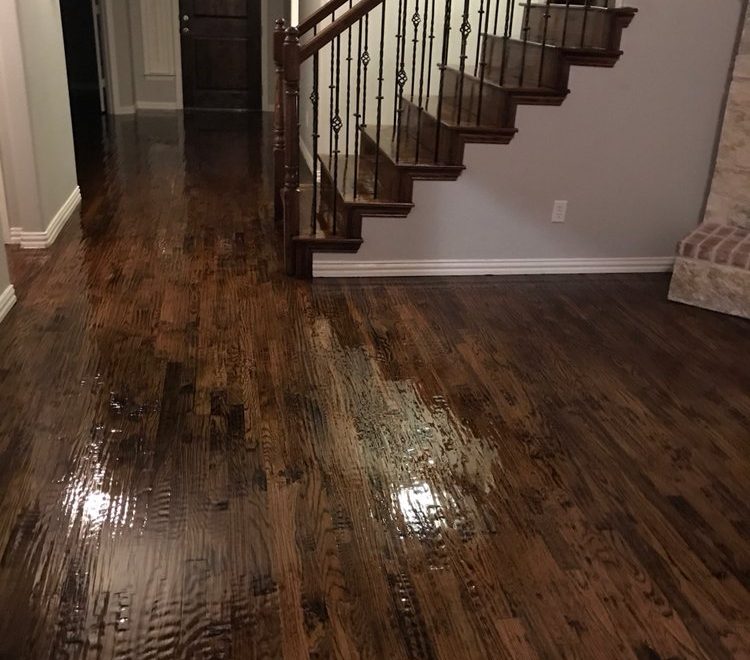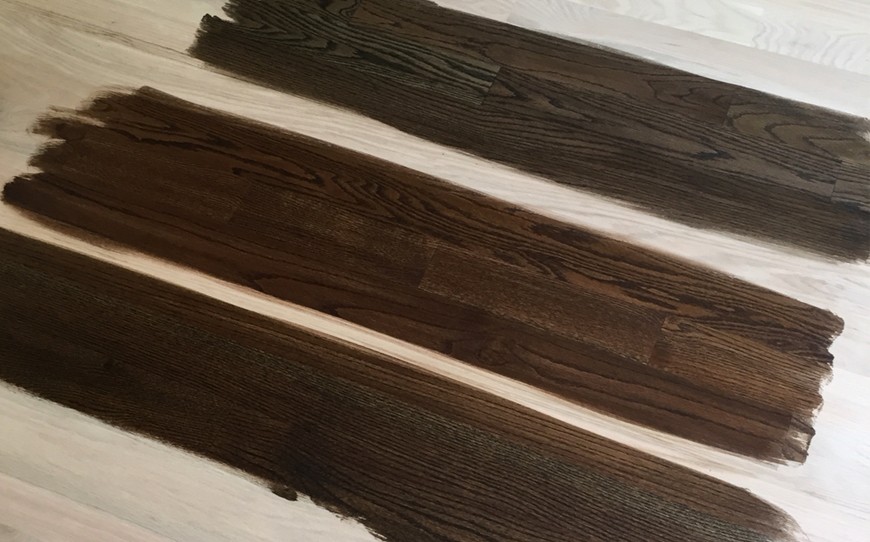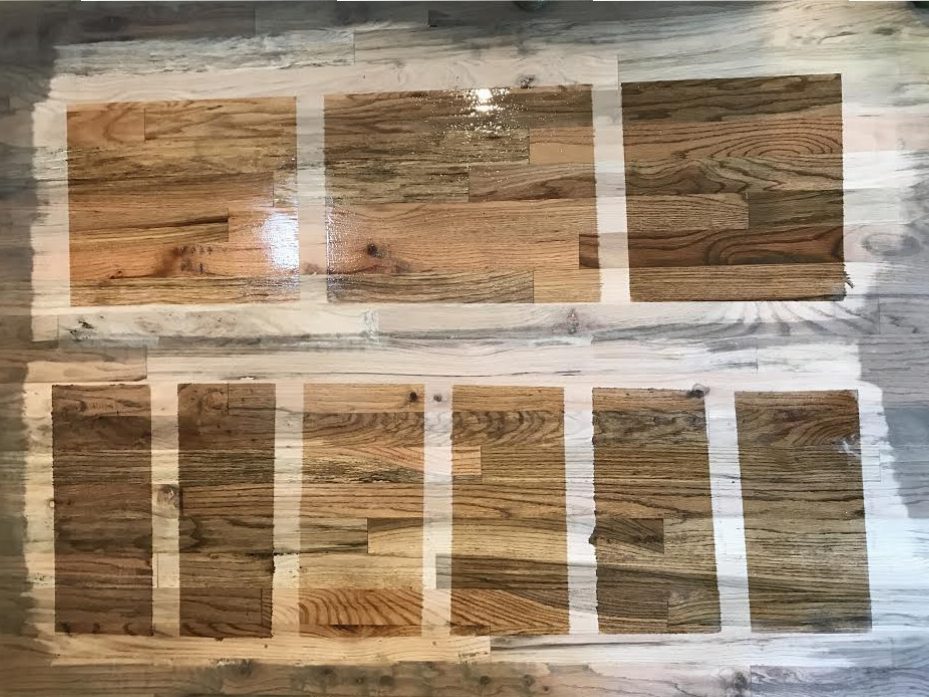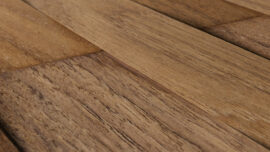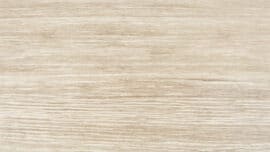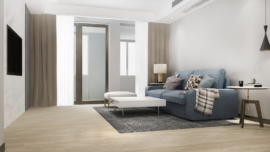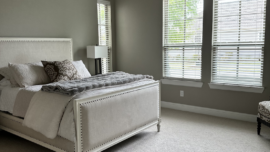If you are thinking about choosing a hardwood floor for your home chances are you are looking for a durable flooring option. The durability of any wood floor depends on its hardness.
The harder the floor is the better can it resist scratching and wear-related damage.
However, whatever the name might suggest, not all hardwood is hard. Some woods are harder than others. How do you find out which one is right for you? Fear not, we’ve got you covered!
How hard is hardwood really?
The hardness of wood is determined by how much pressure it can withstand. The Janka Hardness Test measures the hardness of different wood species and classifies them by the results. During the testing, a steel ball with an 11.28-millimeter diameter is pressed into the wood to half the ball’s diameter. This creates a circular indention in the wood with an area of 100 square millimeters. The amount of force spent on the task is measured in pounds-force (lbf) or newtons (N). The more force this procedure requires the stronger is the wood species. Because the testing is done on the surface of the plank and the force is applied horizontally to the wood’s grain it’s possible to also determine side hardness.
To get reliable results the wood used in the test has been air-dried to a 12% moisture content.
The Janka Hardness test also gives insight into how well a particular wood can take on dents and daily wear.
Because of the different characteristics of various wood species, the difference between wood hardnesses is substantial.
The softest hardwood ever tested by the Janka hardness test is Cuipo and can withstand no more than 22-pound force. Australian Buloke is the strongest wood on the list. With 5060 pound force, it’s well above some of the most famous exotic woods like Brazilian Walnut and Bolivian Cherry. It’s almost twice as strong as Red Mahogany and Southern Chestnut and three times stronger than the ever-so-popular flooring choice of Americans – Hickory.
Testing and collecting data is one thing but successfully applying the results to your next remodeling project is another thing. Knowing in advance what to expect from certain wood species will make it easier for you to choose the right kind of floor for your home.
What is the optimal hardness your desired wood species should have?
As long as you are installing a floor for residential use there is little chance you’d need something from the top of the Janka Hardness list. The most popular wood species used for home flooring purposes are usually of medium strength. Red Oak, White Oak or Maple are some of the most popular domestic flooring choices across North America. Most of the domestic wood species tend to be of a lighter color unless stained or otherwise distressed.
Exotic woods come usually in more colors and differ from board to board. Their grain pattern is also more unusual and less continuous than in the case of domestic wood. This unique look has caused a massive spike in exotic wood floor sales in the last decade in the US. Most exotic wood species are also harder and consequently more durable than standard domestic wood species.
However, hardness isn’t always good. Most of us install a hardwood floor to avoid the trouble of removing and installing a new one years later. Solid hardwood floors can be sanded and refinished up to five times. But sanding and refinishing a truly hard hardwood floor isn’t all that easy. Because of the strong built most hard floors require very precise work and could splinter. This is also the reason why exotic wood species are more expensive to treat and require a specialist who has experience in the matter.
Domestic Hardwood Species
Red Oak
1290 lbf
Red Oak is somewhat the classic flooring choice. It’s so popular that every other wood is measured against its hardness and durability. The species usually has average to heavy graining with moderate color variations. The color of a Red oak floor can be anywhere from creamy pinks to light reds all the way to darker tones like shades of brown. Unlike white oak that has more earthly colored undertones (browns and greys), red oak is known for its more pinkish appearance.
Maple
1450 lbf
This wood species is native to the northern regions of the US and Canada. Maple hardwood is mostly of a faint white color that might slightly vary from board to board. The continuity of tone throughout the board depends on the grade of the wood. Maple flooring can contain minimal to a lot of brownish/black mineral streaks. The higher the grade is the least marks of this kind occur. Maple graining (sometimes straight lines, other times curly patterns) is so fine that oftentimes it goes unnoticed. “Birdseye” graining is also characteristic of maple. Birdseye is a distinctive pattern that resembles tiny eyes and is common in many wood species. Even though maple hardwood is mostly known as a very hardwood species, it contains areas that have softer structures. This can sometimes lead to the uneven color distribution when staining the floor. To avoid blotchiness it’s recommended to use a liquid wood conditioner prior to applying a stain to your maple floor.
Hickory
1820 lbf
Hickory is one of the hardest species of wood that’s native to North America. Because of the great variety of color and unique graining, it’s one of the widely used woods too.
Coloring for Hickory hardwood flooring can range from creamy whites to medium browns and even to darker browns. To get the most out of the unique grain variation of Hickory it’s common to cut it in 5″ and wider planks.
Exotic Hardwood Species
Brazilian Cherry
2820 lbf
Brazilian Cherry is an exotic wood species known for its extreme color variations. Also known as Jatoba, it’s on the top of the Janka hardness rating. When installed it created a beautiful reddish/brown pattern with reddish/blonde highlights and occasionally deep red selections.
Unlike many flooring alternatives that tend to fade when exposed to the sun, Brazilian Cherry gets richer and darkens with exposure to light. The unique graining also plays a role in creating an interesting and inviting environment.
Santos Mahogany
2200 lbf
This hardwood species is the second-most popular choice among the exotic kind. Compared to Brazilian Cherry, the most popular exotic wood on the market, the tone of this wood remains mostly homogenous throughout the plank. The color variation ranges from medium brownish/orange to dark brown. Santos Mahogany hardwood has a wavy grain that incorporates an open pattern. Just like Brazilian Cherry, when exposed to light Santos Mahogany will become richer.
Bamboo
Unlike other woods bamboo doesn’t have a set Janka hardness rating. The hardness of bamboo depends on the harvesting time. Cheaper bamboo has usually been harvested earlier than more expensive grass and is less hard.
